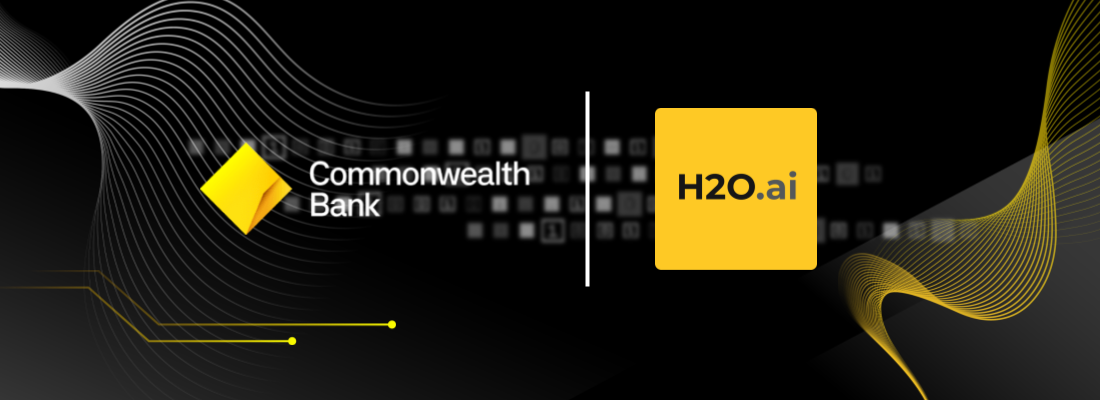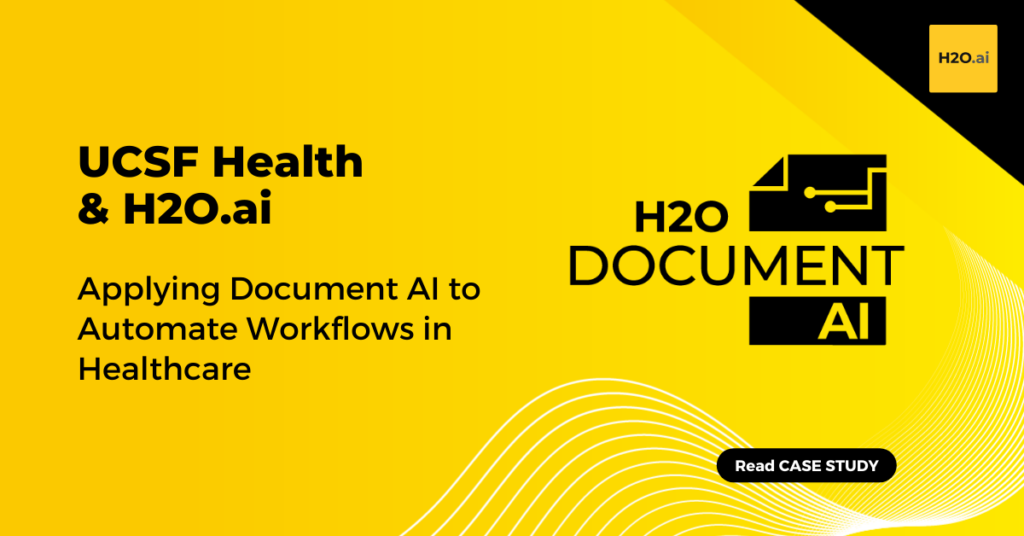How Commonwealth Bank is transforming operations with Document AI


Sonal Surana , General Manager at Commonwealth Bank of Australia shares recent innovative ideas at H2O World Sydney.
It’s been a rollercoaster of a ride this first year of our partnership with H2O.ai, and the momentum continues to get even more exciting. We’ve heard from Matt about our AI ambition and how front and center it is for CBA strategy, and we’ve heard from Andrew on how we are mobilizing and delivering an AI culture across all levels of the organization.
Now it’s time for Dan and me to bring it to life for you with a few solid examples of recent innovative ideas turning into cool capabilities and starting to drive real differentiation and delight in what we are delivering for our colleagues, our customers, and our communities.
So first up is Document AI.
Document AI is H2O’s product, and we are really leveraging how we can reimagine and transform core processes and operations here at CBA. It is helping us unlock new dimensions of value as we stretch ourselves from structured data to unstructured data. From analyzing billions of transaction data points to now analyzing equally massive, previously unexplored opportunities with documents, text, and image data. From moving from automation to now, intelligent automation. New technology is now enabling us to get the brains added to previously available arms, legs, and eyes of OCR and RPA solutions.
Leading edge developments in the space of machine learning, deep learning, natural language processing and generation enable us to unlock a lot of radical transformation in the way we previously thought of dealing with documents.
And thanks to our strategic partnership with H2O, we’ve gotten early access to this Document AI capability as they were rolling this out to the market. And in a short four months of time, we’ve stood this up as a capability for the group where today we are having the scale and ability to process millions of documents per day on this platform.
This really enables us to think holistically about the processes we can transform within CBA leveraging this capability. Ignoring unstructured data and the treasure trove of insights that are available and hidden in it, creates knowledge gaps and missed opportunities, and that is where we want to get focused to really unlock value for us.
So where do we start looking for opportunities? To give you a sense of scale of possibilities, CBA has over 16 million customers and with a few hundred pages of documents per customer, that already creates hundreds of millions of documents where we can start to unlock value,
Starting from account origination and customer onboarding, related documents to ID documents for customer verification to loan applications and income verification documents for credit assessment to ongoing servicing requests. And add to that non-customer documents such as supplier contracts, invoices, purchase orders, just massive, the scale of opportunity that exists, and the hidden insights that are waiting to be mined and productivity gains that are waiting to be unlocked.
From a customer lens, let’s zoom into the credit assessment example a bit more. Any loan or mortgage application requires numerous documents, be it bank statements, credit card statements, pay slips. All of these documents come from varying different formats and templates depending on the source institution they come from.
Even if you take the examples of pay slips, they hold a wealth of information from gross salary to net salary to names and addresses of the employer and employee, salary period, pay range, tax details. Just traditional OCR is not able to keep up and has limitations on varying document templates and also the intelligence that can be applied to really extract relevant insights from that. So a lot of possibilities as we look and zoom to unlock value from Document AI.
Even as we look at a non-customer-focused lens, there are many benefits to the procurement function, accounts payable, and accounts receivable process. As we think about invoices and the varying invoice formats, applying technologies like Document AI in invoice processing can really reduce operational costs massively, make us produce payments 10 times faster and also create a three-way automated match between purchase orders, invoices, and receiving reports, driving tremendous efficiencies. So that’s just a few examples of where this technology can really unlock potential for us.
Let’s now zoom into KYC and what we’ve been able to achieve there. Commonwealth Bank is one of the largest banks in Australia, and we have hundreds of thousands of customers getting onboarded every year. To ensure compliance with risk policies and regulation, we of course make sure there’s proper due diligence and every customer goes through the KYC process.
Bank colleagues today spend a significant amount of time first extracting and second verifying information from customer ID documents such as passports, driver’s licenses, birth certificates, etc. And as we look at this really poised, wonderful area for us to pilot Document AI, Document AI is able to automatically read and extract this information from customer ID documents such as name, address, place of birth, and other critical information and store and structure it for us to really then leverage it downstream.
This really opens up possibilities on how we can automate and simplify, improve accuracy and productivity, and create delight for customers through faster onboarding and for colleagues through simplifying and automating core processes. Legacy OCR does not really hold up in scenarios of varying document types, especially when photocopies are provided or faxes and emails come through of scanned ID documents. This creates poor resolution. Equally, you have IDs coming in with various sizes, shapes, orientation, and that’s where only traditional OCR is not able to drive as the accuracy uplifts that is possible with this new technology that’s now available to us.
So we’ve made solid progress on this effort. H2O is really helping us bring a combination of models into this automation exercise, classification models that help us identify which sort of document is being supplied with passport driver’s licenses, or others. Noise classification models that help us understand the quality of the scan document, noise reduction models that help us do the pre-processing and get the documents ready to then finally apply OCR and advanced NLP AI models to classify and manage that text.
So with some stats, every week we have a few thousand ID documents coming our way (75% of them are passports, 25% driver’s licenses and others). We have a few dozen colleagues who are manually doing the quality verification. And that is where we are beginning the automation. And we will have the potential to take it further upstream at the extraction stage itself.
We’ve already achieved accuracies and automation of 50-85% on varying document types. And this really is just the beginning of where we can start to embed and re-look and radically reimagine our day-to-day operations and make lives better for our colleagues and our customers.
Learn more about Document AI here.










